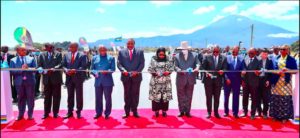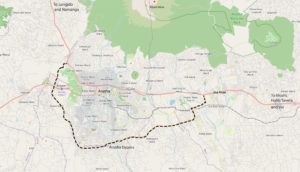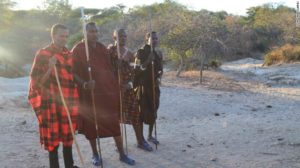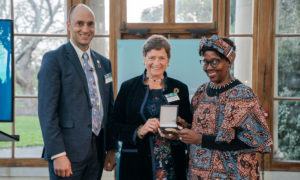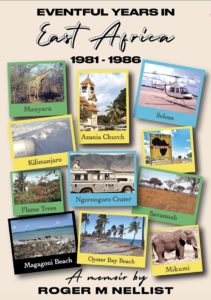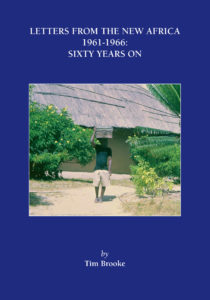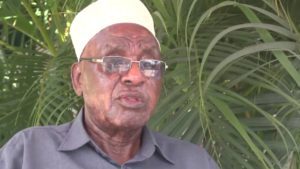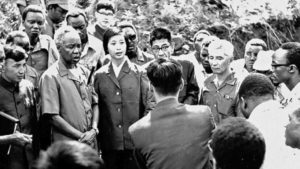by Ben Taylor
Progress on health insurance schemes
The government announced in May that it was at an advanced stage of enacting a universal health insurance scheme regulation. They also revealed the findings of a study that found three quarters of citizens were willing to subscribe to the universal health insurance fund. The study was conducted by the National Institute for Medical Research (NIMR).
The fund is in line with Tanzania’s 2007 Health Policy which requires all Tanzanians who are economically capable to contribute towards their health expenses whenever they need them.
Data presented in Parliament by Health Minister Ummy Mwalimu on Monday, showed that up to December 2021, a total of just over 9 million Tanzanians (around 15% of the population) had enrolled with a health insurance cover. This means that 85% of the country’s population were still using cash when accessing health services.
The Minister reported that the NIMR study found that Tanzanians are able “to contribute TSh 65,000 per year for the purpose” and in return, they will access health services at all health facilities in the country including the Muhimbili National Hospital and Bugando Zonal Referral Hospital among others.
The project manager for Swiss Tropical and Public Health Institute (Swiss TPHI), Mr Ally Kebby, said the organisation was impressed with steps being taken by the government towards universal health insurance coverage.
Vice President Philip Mpango called for full participation of the private sector in funding research and innovation as a solution to emerging global health challenges. “There is need for the involvement of the private sector and others to take full part in funding, this is the only way we can conquer this challenge,” he said. (The Citizen)
Renewed partnership with the World Health Organisation
In April, the Government of Tanzania launched a new five-year country cooperation strategy with the World Health Organisation (WHO), worth an estimated USD $73 million. This effectively cements a reset of the relationship with the WHO that had deteriorated when the government of President Magufuli declined WHO advice during the Covid-19 pandemic.
Addressing a news conference during the strategy launch, Minister of Health Ummy Mwalimu, said that the strategy will manage different health activities between the government and WHO.
The strategy will focus on five areas including health and equity situation, gender equity and human rights, health emergencies, health information systems, partnership and setting the strategic priorities.
According to Ahmed Mazrui, Minister of Health In Zanzibar, the policy is set to redefine the shared goals of Tanzania and the WHO’s. “With this strategy, the country will be able to target at bettering different key areas in the health sector,” said Mr Mazrui.
“I commend the strong partnership between WHO, other sister UN Agencies and the Ministry of Health in Mainland and Zanzibar which has facilitated delivery of complimentary mandates,” said the UN Resident Coordinator, Mr. Zlatan Milišić. “This Country Cooperation Strategy is therefore timely as we all have the responsibility to work together. I am confident that through continued partnership, the health sector will be able to meet its ambitious goals towards improving the health and well-being of the population.”
Under the new partnership, the WHO’s support in the next five years will focus on:
• Strengthening health systems to ensure universal access to quality reproductive, maternal, newborn, child and adolescent health (RMNCAH) and other essential health services.
• Protecting communities against emergencies of infectious diseases and other public health events.
• Reducing exposure of individuals to risk factors that threaten their health and well-being.
• Improving efficiencies in the health sector through better, equitable health governance, leadership, and accountability.
WHO Tanzania Representative, Dr. Tigest Ketsela Mengestu acknowledged the efforts and contributions that led to the development of the strategy. “Today, WHO renews its commitment to collaborate with the Government of the United Republic of Tanzania for the next five years towards achieving health sector goals in improving the health of its population and bringing in transformative changes in the health sector. We are confident that working together and guided by this strategy, the Ministry of Health, WHO and health partners in Tanzania will contribute towards a common mission to promote health, keep the world safe and serve the vulnerable.” (The Citizen, WHO)
WHO estimates as many as two-thirds of Africans have had Covid-19
The World Health Organisation has published a report suggesting that across the continent, more than two-thirds of Africans may have contracted Covid-19 over the past two years, around 97 times more than officially reported infections.
Lab tests reported in official data have detected 11.5 million Covid cases and 252,000 fatalities across the African continent. However, according to the report, by September 2021 some 800 million people could have already been infected. The WHO Africa region said its study suggests the officially confirmed numbers were “likely only scratching the surface of the real extent of coronavirus infections in Africa”.
“This meta-analysis of standardised sero-prevalence study revealed that the true number of infections could be as much as 97 times higher than the number of confirmed reported cases,” said WHO Africa boss Matshidiso Moeti.
The global average of true infection numbers is believed to be 16 times higher than the number of confirmed reported cases. With limited access to testing facilities for much of Africa’s populations, many infections went undetected, as testing was mainly carried out on symptomatic patients in hospitals and travellers requiring negative PCR results.
“The focus was very much on testing people who were symptomatic when there were challenges in having access to testing supplies” and this resulted in “under-representing the true number of people who have been exposed and are infected by the virus”, Moeti told journalists.
While the pandemic has had a catastrophic impact on some parts of the globe, Africa appeared to have escaped the worst and was not as badly hit as initially feared at the start of the pandemic. With weak health facilities and services, many experts had feared the systems would be overwhelmed. Several analyses have been made of the pattern of the pandemic in Africa, with some concluding that the continent’s youthful population acted as a buffer against severe illness. An estimated 67% of infections on the continent were symptomless.
Most Covid cases on the continent have been recorded in South Africa – with over 3.7 million infections – which conducted most tests and boasts of better-resourced health facilities compared to most sub-Saharan Africa countries. (The Citizen)
New private cancer hospital to be constructed
Indian medical firm, Apollo Hospitals, has signed a Memorandum of Understanding (MoU) with the Eclipse Group Africa to set up a stateof-the-art diagnostic centre for cancer in Tanzania.
The MoU agreement was signed in August at the Indian High Commission in Dar es Salaam, witnessed by various people including Indian High Commission Mr Binaya Pradhan.
Speaking during the signing of the agreement, Eclipse Group Africa Chairman Mr Zahir Damji said that through the partnership Apollo Hospitals will provide health care services with advanced cancer care treatment. “The construction of the hospital will greatly help Tanzanians and many other African countries to be treated here in Tanzania,” said Mr Zahir. He added that the project will start with 60 beds that will provide comprehensive care for cancer from diagnosis to treatment.
“In line with the vision of Apollo Hospitals, the centre will offer bestin-class treatment and care with a team of experienced oncology, cancer care management and the world’s finest technology to make quality cancer care to over 55 million people in Tanzania,” said Mr Zahir.
The Indian High Commissioner in Tanzania Mr Binaya Pradhan said that health has been an important area of collaboration between the two countries, adding that Tanzania and India have been development partners for many years. (Daily News)

